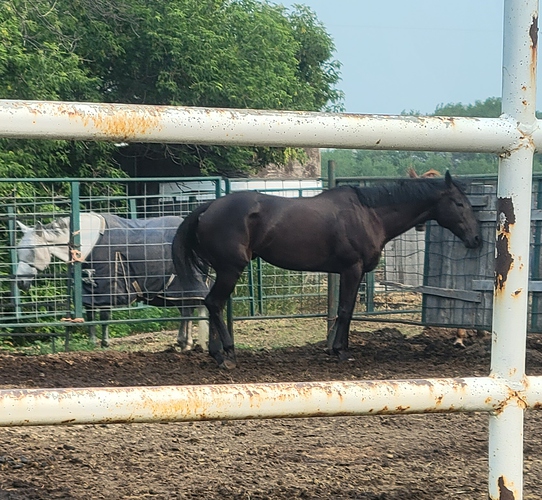I really think Texarkana nailed it.
It is so important you go with someone who either has a connection at the track, or is familiar with the people there. There can be a lot of hurdles when it comes to getting the whole picture of the horse and not all of it is trainers being shady or dishonest: there may be language barriers or the people who own the horse now only have a snapshot of his history. While I value trainer’s opinions, when I am looking at a prospective horse, I really want to know what the groom and the rider think of this horse. They live and breathe the horses in their care and have a very good pulse of that horse’s temperament.
Be patient and remember that trainers, grooms, and riders are BUSY and on a schedule. They don’t always have time to chit-chat; they also deal with a lot of tire kickers, so take none of their brusqueness personally.
An experienced eye can look past the pitfalls Texarkana mentioned – and yes, jogging rarely showcases a horse in their best light. As NancyM suggested, you really want to see these horses work / breeze in the morning which is EARLY.
The only other thing I will add is, no horse retires from the track completely sound. They will all have some form of bodily soreness because racing is hard work. Sometimes it is just residual muscle soreness that goes away as their workload is reduced. Sometimes it’s something requiring veterinary care. How you can tell which is which depends on your eye for soundness and your experience with racing.
The way they are shod on the track is not how most sport horses are shod. You will likely deal with some growing pains as you pull their plates and address their long toes and underrun heels. They are trimmed this way deliberately to improve breakover, and it can be a multi-month journey to get their feet and bodies back on track. Expect that there may be some abscesses or sore points in the months following, and stay on top of their angles.
When it comes to picking out one in the shed-row you are interested in, ask to see him. Go into the stall and put your hands on him. Run your hands down his legs, feel for bumps, old injuries, scars, or anything hot that might indicate past or present injury, surgical scars, etc. Do not expect a warm and fuzzy horse and don’t be put off by a horse that seems irritable or grumpy - they are micromanaged to such a degree that sometimes they lose a little personality in the hustle and bustle of race life. They are fed high octane food, usually kept in a stall while they are at the track (but most enjoy plenty of turnout in the off season), may have ulcers from the stress of race life, and are just all around kept in a way that may not be conducive for most horses. That is not to say they are abused or kept poorly - some of these horses have better food and medical access than most humans do. Go in knowing that for a horse in the hands of good race connections, being rehomed to a casual rider is a downgrade, not a “rescue”.
And most of all, keep an open mind and good luck. Please keep us updated on your journey. OTTBs are one of the most rewarding horses you can have, in my opinion.


 ). I have a friend from the track who knows my trainer well, and she knows the local track well and which trainers to avoid etc.
). I have a friend from the track who knows my trainer well, and she knows the local track well and which trainers to avoid etc.

 Handsome boy. Wishing you all the luck with him.
Handsome boy. Wishing you all the luck with him.